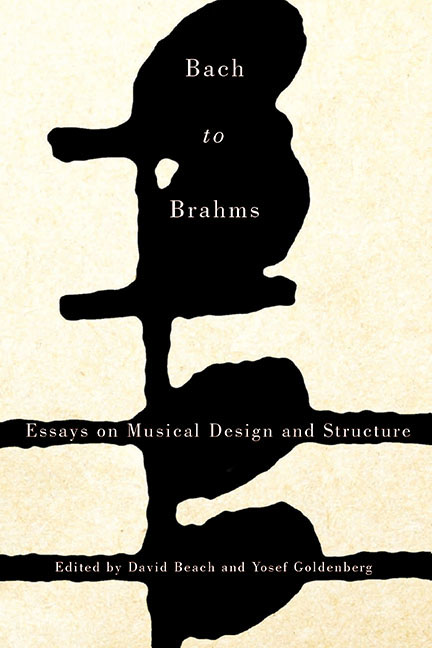Book contents
- Frontmatter
- Dedication
- Contents
- Introduction
- Part One Structure and Design
- 1 Strolling through a Haydn Divertimento with Two Heinrichs
- 2 Ritornelli or Soli: Which Did Mozart Write First in the Opening Movement of His Violin Concerto K. 207?
- 3 Outer Form, Inner Form, and Other Musical Narratives in Beethoven's Opus 14, No. 2
- 4 Temporal Poise and Oblique Dynamic in the First Movement of Beethoven's “Archduke” Trio
- Part Two Focus on Motive
- Part Three Structure and Design II
- List of Contributors
- Index
4 - Temporal Poise and Oblique Dynamic in the First Movement of Beethoven's “Archduke” Trio
from Part One - Structure and Design
Published online by Cambridge University Press: 14 March 2018
- Frontmatter
- Dedication
- Contents
- Introduction
- Part One Structure and Design
- 1 Strolling through a Haydn Divertimento with Two Heinrichs
- 2 Ritornelli or Soli: Which Did Mozart Write First in the Opening Movement of His Violin Concerto K. 207?
- 3 Outer Form, Inner Form, and Other Musical Narratives in Beethoven's Opus 14, No. 2
- 4 Temporal Poise and Oblique Dynamic in the First Movement of Beethoven's “Archduke” Trio
- Part Two Focus on Motive
- Part Three Structure and Design II
- List of Contributors
- Index
Summary
The first movement of Beethoven's “Archduke” Trio has a public face, and a private one. Publicly, it is grandiose, elevated, and most of all, poised. Indeed it would seem the epitome of nobility and elegance, ensuring the longevity of its nickname. Privately, however, it is not so self-assured. Behind the facade roils a more dramatic undercurrent, one that tilts the balance away from lyricism toward a more intense narrative. In particular, its temporal poise is undermined by rhythmic disturbances, creating an imbalance, a leaning forward—an oblique dynamic, if you will. This oblique dynamic permeates the movement in all its aspects; more than motives, themes, form, or any other conventional subject of scrutiny, it is this imbalance in the temporal poise that is the essential expressive content of this movement.
Little betrays this at the very opening, but there are hints of a subtle bias: the piano's left-hand rocking accompaniment is slightly off-kilter, placing its tonic bass on eighth-note offbeats (see ex. 4.1a). The left-hand chords seem to float over the beat, leaning forward as if tilted at an angle. The melody is similarly off-center: Its peak tone D falls on the second beat, shifting the melodic focus off the vertical toward the oblique. (Not incidentally, the melody's B♭ to D echoes the bass's D to B♭ at one level of augmentation, eighth note to quarter note.) This slight forward tilt inclines toward a stronger accentual goal, and the following measure provides one in the form of a dotted half note F, whose durational accent is underscored by the melody's precipitous downward sweep. (The sixth it outlines will have motivic echoes throughout the movement.) The extra weight placed on the second measure is not sufficient to disturb the default hypermetric counting (in which the first measure is perceived as strong), but it does imbue the initial measure with a forward impulse, as if on a gentle slope.
My description of this passage has gravitated toward metaphors that are visually or spatially oriented. While this might seem antithetical to a temporal context, I would argue that it is not.
- Type
- Chapter
- Information
- Bach to BrahmsEssays on Musical Design and Structure, pp. 57 - 68Publisher: Boydell & BrewerPrint publication year: 2015



